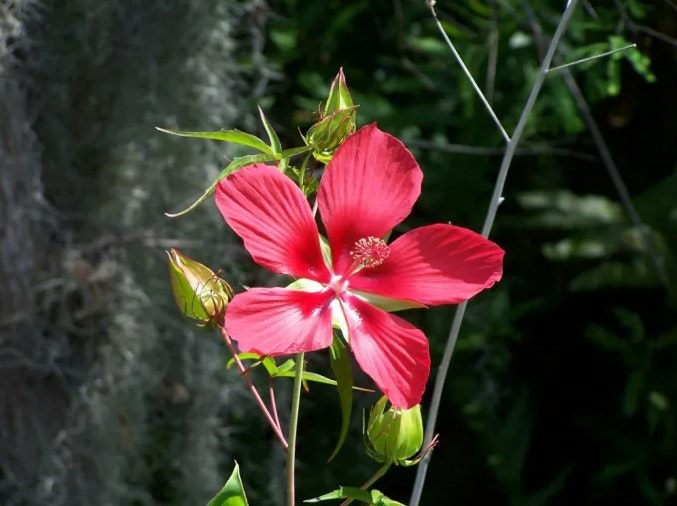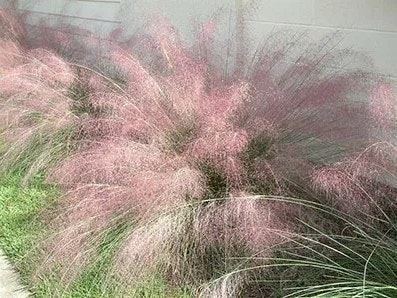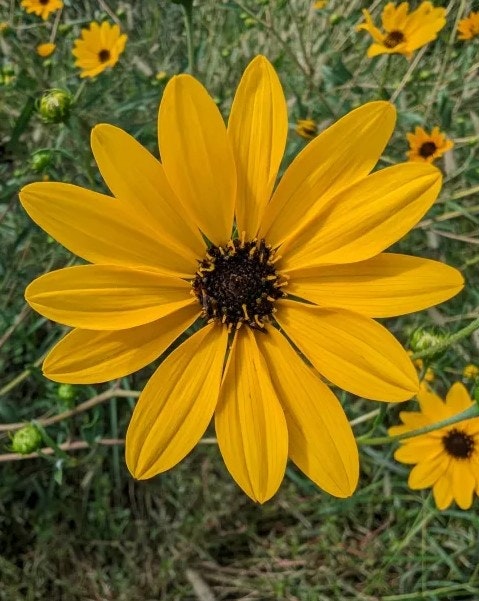Get The Dirt: Plants That Love Wet Feet

Osprey Observer
By Lynn Barber
July 1, 2025
Many of us are hoping our rainy season will get started very soon, and it has and will continue. We can capitalize on our upcoming moisture by planting lovely perennials that like to have wet feet. Yes, I really do know that plants do not have feet, but as you can imagine, I’m referring to their roots! Five of my favorites include swamp hibiscus, cardinal flower, muhly grass, swamp sunflower and wiregrass. These plants thrive in low areas of your landscape that retain water.
Swamp hibiscus, also known as scarlet rosemallow or Hibiscus coccineus, which is native to Florida and the southeastern U.S., produces amazingly beautiful red flowers. We have this plant on the bank of our lower pond in the Bette S. Walker Discovery Garden, located in the courtyard of the Extension office. This plant can reach a height of 15 feet.

Muhly grass, Muhlenbergia capillaris, a native plant, reaches a height of 3-5 feet and a spread of 2-3 feet. It prefers full sun and can tolerate extreme drought and flooding. Muhly grass has narrow foliage and produces pink fall flowers. This grass can be used as a border, as an accent, in mass plantings and as cut flowers.

Swamp sunflower, Helianthus debilis, another native, reaches a height and spread of 2-4 feet. It is fast-growing, prefers full sun and attracts butterflies and birds. It is a perennial that produces yellow/brown fall flowers. Plant it in mass for a large pop of color and interest.
Additional information on each of these plants and more can be found at Ask IFAS plus the plant name.
There are several reasons to stop by our office. We have the eye-pleasing Bette S. Walker Discovery Garden, a lovely perennial garden and pollinator garden created by Girl Scouts. There is a master gardener on duty who can answer your questions, and you can submit a soil sample for testing at a nominal cost. Please check our calendar of events at www.eventbrite.com/o/8606873308. If you do not live in Hillsborough County, please contact your local County Extension Service for information on programs it provides.
Contact: labarber@ufl.edu.
